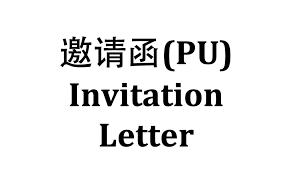When applying for a visa to China, one of the most important documents that applicants may be required to provide is a visa invitation letter. This document serves as a formal request and confirmation from an individual, company, or organization based in China, inviting the foreign applicant to visit for a specific reason such as tourism, business, family reunion, cultural exchange, or study. The Chinese authorities often use this letter to verify the purpose of travel and to ensure that the visitor has a legitimate reason for entering the country. Without this invitation letter, certain categories of visas may not be granted, making it a vital requirement for many travelers.
The China visa invitation letter also serves as evidence of trust and responsibility. By issuing this letter, the inviter in China essentially guarantees that the foreign guest has a legitimate purpose for visiting and will comply with Chinese laws and visa regulations. The authorities view the letter as a supporting document that adds credibility to the applicant’s visa request, reducing the risk of misuse. Therefore, both the applicant and the inviter need to ensure that the letter is written properly, clearly states the purpose of travel, and includes accurate details.
Key Information Required in a Visa Invitation Letter
A valid invitation letter must contain detailed information about both the inviter and the applicant to avoid delays or rejections during the visa application process. For the applicant, the letter should include full name, gender, date of birth, passport number, and nationality. It should also state the purpose of travel, the intended dates of arrival and departure, and the places the visitor will stay or visit while in China. This information is critical for visa officers to evaluate the authenticity of the application and to verify that the applicant has a structured plan during their stay.
For the inviter in China, the letter should include their full name, contact number, address, and relationship with the applicant. If the inviter is an organization, such as a company, university, or cultural institution, the letter should include the official seal or stamp along with the organization’s registration details. This gives the invitation more authority and makes it easier for visa officials to confirm its authenticity. Additionally, the invitation letter should state whether the inviter will cover expenses related to accommodation, travel, or daily living costs, as this may impact the applicant’s visa approval.
Types of Invitation Letters Based on Visa Categories
China issues different types of visas depending on the purpose of travel, and the invitation letter varies accordingly. For business visas, commonly known as M visas, the invitation must typically come from a registered Chinese company or trade partner, outlining the details of meetings, conferences, or cooperative projects. The letter should be printed on the company’s official letterhead and stamped with its corporate seal to show authenticity. Business travelers are often required to attach this letter to their visa application as a mandatory document.
For family visit visas, known as Q or S visas, the invitation letter must come from a family member or relative residing in China, such as a spouse, child, or parent. In this case, the letter should include proof of relationship, such as birth certificates or marriage documents, alongside detailed information about the planned stay. For student visas (X visas) and work visas (Z visas), universities and employers typically issue official invitation letters that follow strict formats approved by the Chinese government. Tourists traveling with groups may also require invitation letters from registered travel agencies that arrange itineraries and lodging.
Writing and Formatting an Effective Invitation Letter
When drafting a China visa invitation letter, clarity, accuracy, and formal tone are essential. The letter should be typed rather than handwritten to maintain professionalism and to reduce the chances of rejection due to readability issues. It should begin with a polite salutation addressed to the relevant Chinese embassy or consulate, followed by a clear statement of invitation. The inviter should explicitly mention the purpose of the invitation, whether it is business cooperation, family reunion, cultural exchange, or tourism. By clearly defining the intent, the letter allows visa officers to understand the applicant’s travel plan without ambiguity.
Formatting is equally important, as embassies and consulates prefer letters with structured sections and easy-to-read details. The invitation letter should ideally be one to two pages long, signed by the inviter, and include all necessary attachments, such as copies of identification documents or business licenses. While there is no single universal format, many consulates publish guidelines or templates on their websites. Using these templates can reduce mistakes and increase the likelihood of smooth visa approval. Applicants should also ensure that the information in the invitation letter matches other supporting documents, such as flight bookings or financial statements, to avoid contradictions.
Common Mistakes to Avoid and Best Practices
One of the most common mistakes applicants make is providing incomplete or inaccurate information in the invitation letter. Errors such as spelling mistakes in names, incorrect passport numbers, or mismatched travel dates can lead to unnecessary delays or outright rejections. Another frequent issue is submitting a letter that is not signed, stamped, or written on official letterhead, especially in the case of business or institutional invitations. Such oversights often signal to visa officers that the letter may not be authentic, prompting stricter scrutiny of the application.
To avoid these pitfalls, applicants and inviters should carefully review the letter before submission, ensuring that all details are correct and consistent. It is advisable to prepare the letter well in advance of the visa appointment to allow time for corrections or adjustments if required. Furthermore, the inviter should remain accessible to embassy officials for potential verification calls, as sometimes consulates contact the inviting party directly. Using clear and formal language, attaching relevant supporting documents, and following embassy-specific guidelines are considered best practices that greatly improve the chances of a successful visa outcome.

